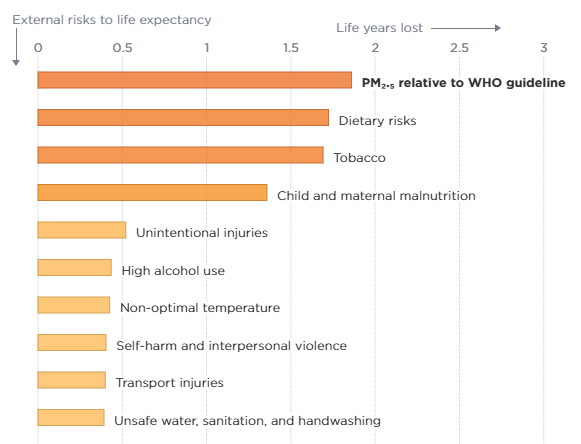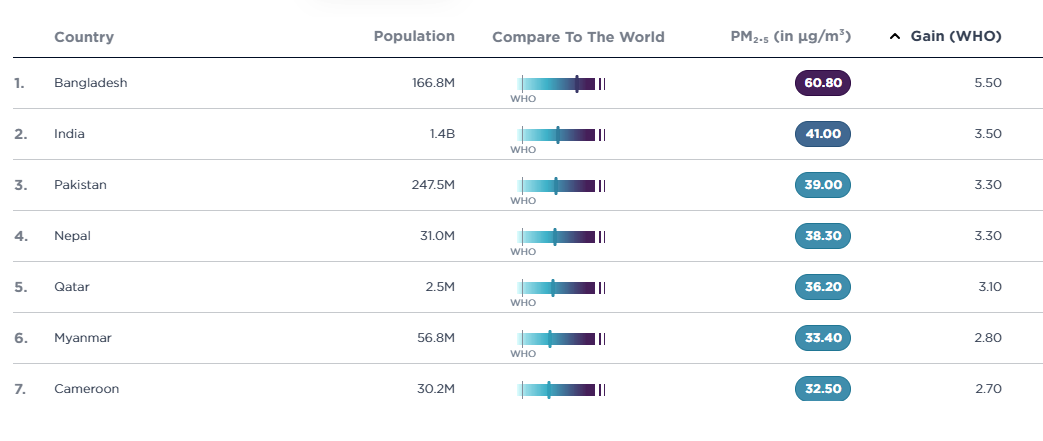7667766266
enquiry@shankarias.in
Why is in news?
According to a study by the Energy Policy Institute at the University of Chicago (EPIC) - Air pollution is reducing the average life expectancy.
Air Quality Life Index (AQLI) report:

According to the WHO, annual average concentrations of PM 2.5 should not exceed 5 µg/m3, whereas India’s national annual PM2.5 standard is 40 µg/m3.

India’s Status:

Reference